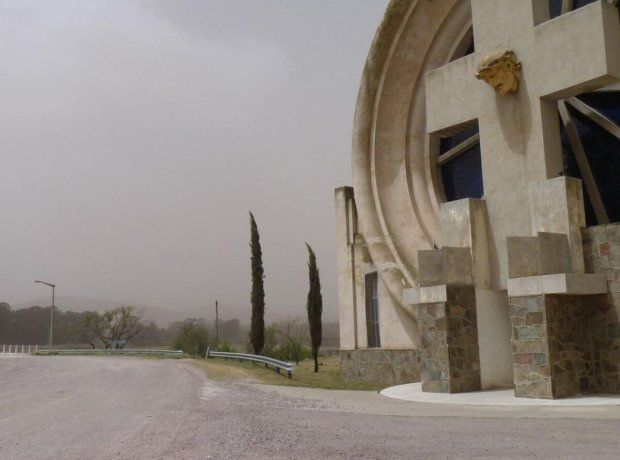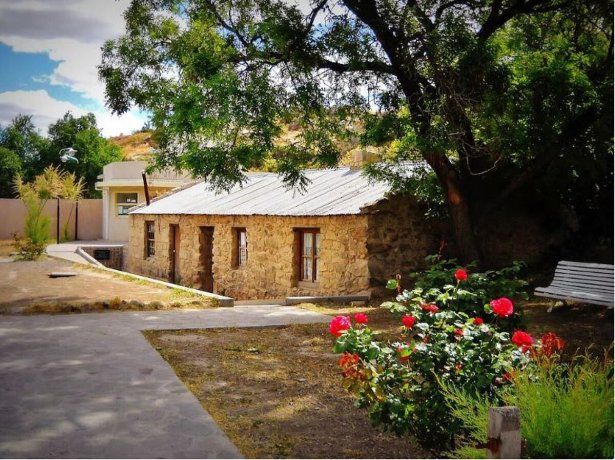The World Tourism Organization (UNWTO) recognized several locations in Argentina as candidates for their sustainable practices and cultural wealth. He did it on his own initiative. “Best Tourism Villages”, among which are the provinces of Chubut, Neuquén, Mendoza, Misiones, Córdoba, Entre Ríos, Buenos Aires and Jujuy.
The initiative seeks to promote and recognize rural communities that developed sustainable practices and offer authentic tourist experiences. This program highlights the importance of preserving local culture, heritage and the natural environment. The towns are Gaiman (Chubut), Caviahue-Copahue (Neuquén), Los Chacayes (Mendoza), Saldungaray (Buenos Aires), Campo Ramón (Misiones), Villa Tulumba (Córdoba), Urdinarrain (Entre Ríos) and Barrancas (Jujuy).
These places stood out for their efforts to preserve traditions, promote responsible tourism and contribute to the local economy. The UNWTO explained that this is “a global initiative to highlight those towns where tourism preserves cultures and traditions, celebrates diversity, provides opportunities and safeguards biodiversity.”
On Thursday, November 14, As disclosed by the UNWTO on social networks, the final list will be announced.
Gaimanin the province of Chubut, It was founded in the late 19th century and preserves Welsh traditions, evident in its architecture and festivals. Tea houses offer a traditional culinary experience, with typical products such as “Welsh coffee”.
Among the historical sites, the Stone House, built in 1874, stands out. Princess Diana’s visit in 1995 also attracted attention to this town. The “House of the Poet” and “Regional History” museums and the Bethel and Salem chapels allow visitors to delve deeper into the history of the place. In addition, the Paleontological Park exhibits fossil remains that demonstrate the natural wealth of the region.
gaiman chubut
Gaiman It was founded at the end of the 19th century and preserves Welsh traditions.
Courtesy: Infobae
This destination is characterized by its proximity to the Copahue volcano. The Andean landscapes and hot springs are an attraction for visitors. Caviahue is an ideal environment for sports such as skiing and snowboarding, while Copahue stands out for its hot springs. Among its natural attractions is the Salto del Agrio, a 45-meter-high waterfall.
Los Chacayes, Mendoza
Los Chacayes is surrounded by mountains and vineyards, which makes the place an attraction for lovers of nature and local gastronomy. It has a population of only 270 people and maintains a balance between environmental preservation and high-quality tourism.
The community is close to the Manzano Historico reserve, a place that was the resting place of the General José de San Martín. In addition, the town offers nationally recognized wine production.
In the match of Tornquist, Saldungaray It is distinguished by its architecture and proximity to natural sites such as the Ernesto Tornquist Provincial Park. Founded at the beginning of the 20th century, it has the Salamone Cemetery, an architectural work from the 1930s that mixes art deco and religious symbolism.
The dam Paso de las Piedras is an attraction for those interested in bird watchingwhile registering growth in tourism with wineries offering tastings and guided tours. Fortín Pavón, built during the Desert Campaign, has historical value as a strategic point in communication with Bahía Blanca.
bs as tourism (1).jpg

Saldungaray has the Salamone Cemetery, a work that mixes art deco and religious symbolism.
Buenos Aires Tourism
Campo Ramon It has a subtropical jungle landscape, where its community – of just over 10,000 inhabitants – bases its economy on agriculture. The featured crops are yerba mate, tea and tropical fruits. There are also several reforestation and biodiversity protection projects.
Some of its tourist proposals are activities such as hiking, cycle tourism, bird watching and agrocamping. Among its points of interest are Salto Teodoro Cuenca, a 12-meter waterfall, and Camping Los Pinos, which offers recreational services.
Founded around the 18th century, Villa Tulumba It has colonial architecture and a serene environment surrounded by mountains. Among its historical sites is the chapel Our Lady of the Rosary, considered an Asset of National Historical Interest.
The Interpretation Center of the Old Royal Road offers information about the route of this historic road to Alto Perú, contributing to the cultural attraction of the area.
Urdinarrain, Entre Ríos
Urdinarrain It has an agricultural tradition, with simple architecture. Your festivities reflect the influence of German immigrants from the Volga, with events such as the Provincial Horse Festival and the Regional Beer Festival, attracting tourists and residents alike.
The Regional Historical Museum and the Horse Museum stand out as points of cultural interest. On the banks of the Gualeguay River, the “Arenas Blancas” Camping Spa offers spaces for outdoor activities.
Barrancas, in Jujuy, It stands out for its proximity to one of the most important archaeological sites in the country, with Inca pictographs and petroglyphs. This area, declared a Municipal Natural and Cultural Reserve in 1994, preserves engravings and paintings of ancient civilizations in rock formations.
Visitors can explore the Barrancas River and the Archaeological Interpretation Center offers information on the history of the region. Among the artisanal traditions of the area, shearing and garment making stand out.
Thursday, November 14 The final list of the best towns in the world will be announced, according to the UNWTO. The recognition of these towns not only highlights their cultural and natural wealth, but also promotes responsible and sustainable tourism.
In other editions, among the best tourist towns in the world were selected Caspalá (Jujuy) and La Carolina (San Luis). According to the Undersecretary of Tourism of the Nationthe selection criteria included a population density of less than 15,000 inhabitants, agricultural, livestock or fishing activities, and a strong sense of community.
Source: Ambito
I am an author and journalist who has worked in the entertainment industry for over a decade. I currently work as a news editor at a major news website, and my focus is on covering the latest trends in entertainment. I also write occasional pieces for other outlets, and have authored two books about the entertainment industry.




